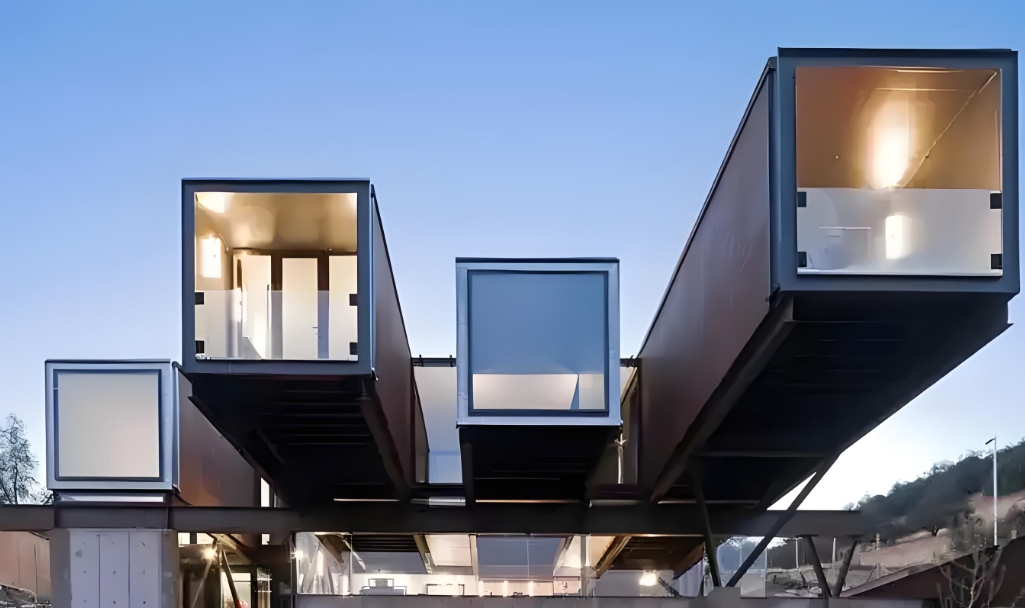How long does a expandable container house last?
How long does a expandable container house last?
In modern architectural design, expandable container house are receiving increasing attention for their flexibility, cost-effectiveness and environmental friendliness. As urbanization accelerates and the demand for housing increases, expandable container house are no longer just a solution for temporary construction or emergency accommodation, but are seen as a long-term living option. In this paper, we will delve into the question of whether container houses are suitable for long-term living and their service life.

I. Overview of container house
1. Definition and origin
Container house is a residence or building converted using shipping containers. These containers were originally used to transport goods over long distances, and have the characteristics of durability, wind and rain protection, which makes them an excellent choice for building materials.
2. Structural characteristics
The basic structure of a container house consists of a steel frame and a weather-resistant outer shell, which is usually treated to resist rust, fire and heat. Their modular design allows for a wide variety of combinations, making them suitable for use in a wide range of construction needs, from single-room occupancies to complex multi-storey buildings.
II. Long-term habitability of containerized housing
1. Structural safety
As they were originally designed to protect goods in long-distance transportation, containers are structurally very strong. With proper reinforcement and remodeling, container houses are fully resistant to adverse weather and natural disasters, such as typhoons and earthquakes. Therefore, in terms of safety, container house is a reliable long-term living option.
2. Comfort and Functionality
1) Heat insulation and ventilation
Containers are made of metal that conducts heat easily, so thermal insulation treatment is especially important in cold or hot climates. By using insulating materials, installing air-conditioning and proper ventilation systems, living comfort can be significantly improved.
2) Interior Design
Due to the limited width of containers, interior design requires careful planning. Through the use of multi-functional furniture, rational zoning and large windows, the sense of space and living comfort can be increased.
3) Utilities
Container houses can be equipped with complete water and electricity plumbing systems, no different from traditional homes. Energy efficiency and environmental friendliness can be improved by using renewable energy equipment such as solar panels.
3) Cost-effectiveness
Container houses are usually less expensive to build than traditional homes, especially in areas with limited land resources or expensive building materials. Their fast erection speed and mobility also help reduce the overall cost of living.
III. Service life of containerized houses
1. Durability of container materials
Containers are usually made of corrosion-resistant steel with a design life of 25 years or more. With continued maintenance and care, such as regular rust-proofing, painting and inspection, the service life can be further extended.
2. Environmental impact
Containers are greatly affected by the environment, especially in humid or salty areas where corrosion must be taken seriously. In such environments, the use of anti-corrosion materials and techniques is the key to extending service life.
3. Maintenance and care
1) External protection
Regular inspection and maintenance of exterior coatings is an effective means of preventing rust and structural damage. The use of high-quality anti-rust paints and heat-insulating coatings can significantly improve the durability of the container house.
2) Internal Maintenance
Internal maintenance of a container house includes regular inspection and updating of piping, electrical systems and insulation. Maintaining good ventilation and cleanliness also helps to extend the service life.
IV. Advantages and Challenges of Container Rooms
1. Advantages
1) Flexibility
The modular design of the container house allows for quick assembly and disassembly, adapting to a variety of environmental and functional needs.
2) Environmental friendliness
By recycling discarded containers, it helps to reduce construction waste and achieve the goal of sustainable development.
3)Innovative design
Due to the uniqueness of the structure, container houses provide architects and designers with a wide range of creative space to design innovative and modern living spaces.
2. Challenges
1) Laws and Norms
In some areas, the use of container houses may be restricted by strict building codes, so it is vital to understand and follow local laws.
2) Cultural Acceptance
As an emerging form of living, it may take time for container houses to gain widespread social recognition and acceptance.
3) Technical constraints
Insulation and ventilation technologies for specific climatic conditions may increase construction costs and need to be fully considered at the design stage.
Whether in economically developed cities or in rural areas of developing countries, containerized housing is likely to become an important part of people's pursuit of an efficient and environmentally friendly lifestyle. Therefore, it will be very meaningful work for architects, urban planners and policymakers to conduct in-depth research on and promote the application of expandable container house.


